How to connect a Hansa washing machine
 Finding and purchasing a new washing machine is an extremely important stage, but the difficulties do not end there, but only begin. This is due to the fact that it is even more difficult to deliver and then correctly connect a Hansa washing machine. This is why users often entrust the preparation of communications and installation of the “home assistant” to professionals. Moreover, the equipment manufacturer threatens to void the warranty if the buyer connects the equipment on his own. If there is no such warning in the user manual, then you can save your family budget by installing it yourself using our detailed instructions.
Finding and purchasing a new washing machine is an extremely important stage, but the difficulties do not end there, but only begin. This is due to the fact that it is even more difficult to deliver and then correctly connect a Hansa washing machine. This is why users often entrust the preparation of communications and installation of the “home assistant” to professionals. Moreover, the equipment manufacturer threatens to void the warranty if the buyer connects the equipment on his own. If there is no such warning in the user manual, then you can save your family budget by installing it yourself using our detailed instructions.
Unpacking and inspecting the equipment
Any household appliance costs a lot of money, so you should not approach the purchase lightly. Be sure to examine the equipment before purchasing it in a store, because it may have dents, chips, scratches and other visible defects. Next, you should open the hatch door and try to rotate the drum in both directions, which should rotate almost silently with a slight stretch. It is also worth asking a consultant to test the dashboard of the washing machine, for which the machine must be connected to the network. If the control panel lights up and responds normally to the rotation of the programmer, then everything is in order.
Then care must be taken to ensure the safe delivery of the unit. It is best to pay for transportation in the store where the machine is purchased, because it is not only fast, but also safe, since you will be insured against possible problems with transportation.If you decide to transport the washing machine yourself, make sure that the box is securely fixed in the machine. Remember that after payment and refusal of delivery, all responsibility for household appliances will be on you.
Carefully check the integrity and completeness of the washing machine in the store, especially if you buy a display sample.
But even if you use store delivery, you will still have to keep a close eye on the product. Do not sign the delivery form until you have checked the washer. You need to do this as follows: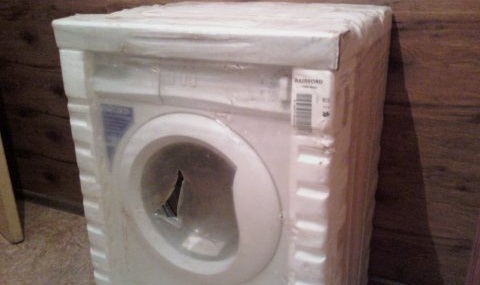
- carefully open the cardboard box;
- carefully examine the body of the machine for cracks, scratches and other damage;
- connect the machine to electricity and make sure that the dashboard responds to your actions;
- make sure that the drum contains all components, warranty card, user manual and other papers;
- Only if all points have been checked, sign the documents of the transport service.
If you are not satisfied with anything that was inspected during the equipment inspection, then under no circumstances sign the goods acceptance certificate. In this situation, you have every right to compensation or a complete replacement of the washing machine. Send the delivery service staff back to the store and wait for the seller to either refund the damaged item or provide a replacement.
Removing the tank clamps
If everything is in order with the machine, then you can start connecting. But even here there is an important clarification - first you need to wait several hours until the machine reaches room temperature, especially if transportation took place in winter. When time has passed, you can install the equipment in the place prepared for it and proceed to reading the official instructions. This is a mandatory item for installing a washing machine, because everything is not only described in detail in the documentation, but also clearly demonstrated with clear illustrations.
It is from the user manual that you can learn that the first step in preparing a “home assistant” is to dismantle the transport bolts. These bolts are needed in technology for safe transportation, because they reliably fix the suspended tank in a stationary position so that it does not damage anything while the washing machine is moving. At the same time, it is strictly prohibited to turn on the washing machine with the transport bolts, since this action will cause the washing machine to fail in a short time. This is due to the fact that the electric motor will try to spin the blocked drum, which is why the cylinder, motor, shaft and other key components of the system will very quickly break.
Starting the washing machine with the shipping bolts in place will void the manufacturer's warranty, so be sure to remove the fasteners before starting the unit for the first time.
Removing the bolts is very easy - this process is described in detail in the owner's manual. It is enough to remove the upper part from each clamp with pliers, throw on a suitable key and turn it counterclockwise, remove them and save them for the future, if the equipment is once again transported for repairs, to the country house, for sale, and so on. Finally, the holes that appear must be closed with plastic plugs that come with the washing machine.
What will the machine stand on?
It is better to find the optimal place for the machine at the stage of choosing the device itself. This is primarily due to the dimensions of household appliances that need to be installed in the room. This is especially true for situations where a built-in model is required to place it in a kitchen unit, in which it will fit perfectly and will not stick out.
It is also necessary to provide a connection to all communications, so it is better to choose a place where there is a riser or siphon nearby. It is better not to lengthen the hoses, as this is unsafe, but to immediately choose a convenient place so that you do not have to extend the hoses or buy another corrugation. Also, next to the potential installation site of the “home assistant” there must be an outlet, preferably one with moisture protection. Finally, it is very important to install the machine on a suitable floor.
- The best floor for a washing machine is tile or concrete.
- A worse option, but still acceptable, is a wooden covering, pre-reinforced for heavy washing.
- The worst possible option is unstable laminate or even parquet, which can swell at the slightest leak.
Having installed the household appliances in their place, you should begin connecting and adjusting to the building level.
Power supply SM
It is best to start connecting from the mains. It is advisable to address this point before purchasing a “home assistant” so that you already have an outlet ready at home, located no further than 1.5 meters from the household appliance. Typically, equipment from the Hansa brand is provided with just such a power cord.
Never use extension cords, as this is very dangerous not only for the electrical equipment, but also for the user.
It is also important to take care of the quality of the outlet, which must be provided with grounding.The ideal option is if it is a separate electrical point with a voltage of 220 Volts, protected from moisture, and its wiring with conductors will correspond to the power consumption of the washing machine.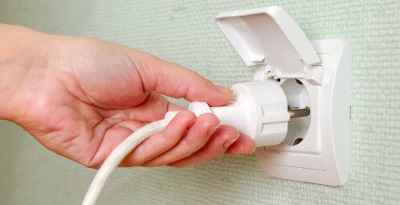
Be sure to ground it if you prepare the outlet yourself. If you connect the washing machine to a socket without grounding, then the user first of all risks his health and that of his family members, who may be electrocuted if there is a breakdown on the SM body.
Cold water supply
The next step is connecting to the water supply. Most often, the machine's inlet hose is connected to cold water, although a number of models can be connected to hot water. This option is possible, but it is better not to use it, because in this case all the filters and hoses will become clogged much faster, in addition, hot tap water is harder than cold, which means that clothes will be washed worse.
It is safer to open the valve on the water supply only before washing, and close it after finishing the work.
It is better to entrust the heating of water to a heating element installed in the housing specifically for this purpose. If you connect the equipment to hot water, the water heating element will only fail faster due to the large layer of scale that occurs with water of increased hardness. That is why it is better to use the standard connection method through a cold water riser. This is very easy to do, especially if a washing machine was already installed in the room.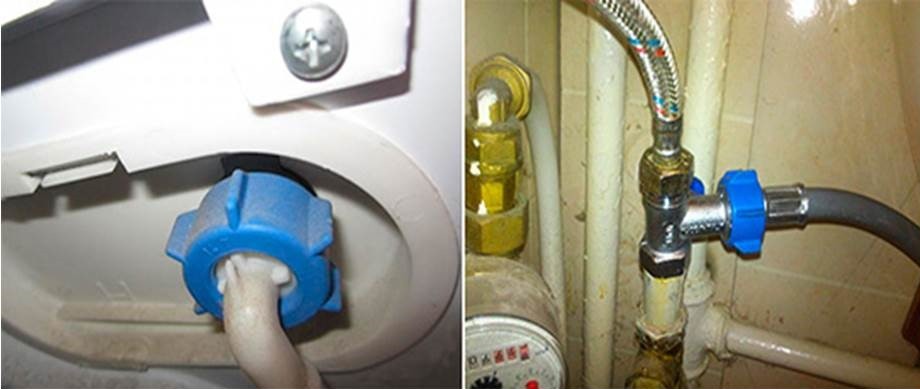
- Connect the filling hose to the prepared outlet point.
- Tighten the clamp tightly with your hands.
- Open the tap and check if water flows at the junction.
If there was no washing equipment in the room before, you will have to turn off the water in the house and make an outlet point in the pipe.Be sure to measure the pressure in the system to ensure that the readings meet the minimum requirements specified in the Hansa CM user manual. It is better to entrust the work of organizing a new point to specialists, especially if there has been no such experience before.
Discharge of sewage from the SM tank
Finally, all that remains is to ensure that the waste liquid is drained. The easiest way is to lower the drain hose into the toilet or sink so that the used water goes down the drain that way. But this method is not only inconvenient and not aesthetically pleasing, but also unhygienic, because sewage will contaminate the plumbing, and the drain hose will constantly dangle under the feet of family members.
It is much better to do everything correctly and connect the drain hose to a siphon or sewer pipe. You need to fix the hose onto a special tee and carefully tighten it with a clamp. Also, be sure to ensure that the sleeve is bent using a clamp on the wall, and also place it no lower than 50-60 centimeters from the floor level so that the waste liquid does not go back into the machine after the working cycle.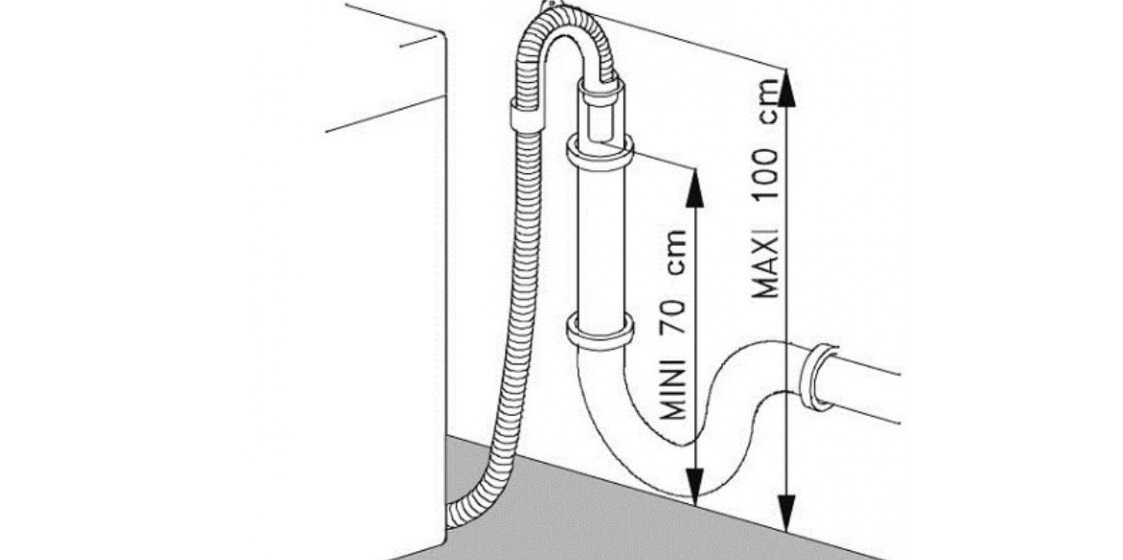
The last installation point before the test run is the adjustment of the “home assistant” to the building level. Place the tool on the lid of the device and tighten the legs so that the washer stands perfectly level. This will reduce vibrations and prevent system imbalance during washing and spinning. Only after this can you run the idle cycle to check the installation and functionality of the Hansa washing machine. Only after a dry start can the equipment be put into full operation.
Interesting:
Reader comments
- Share your opinion - leave a comment

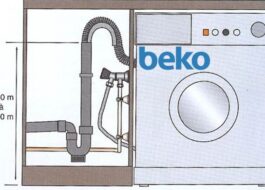


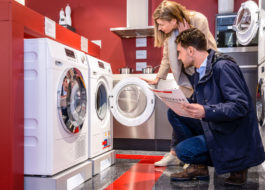
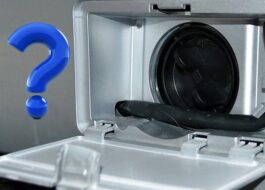
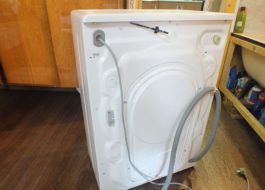














Add a comment